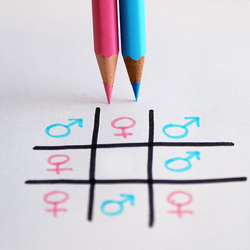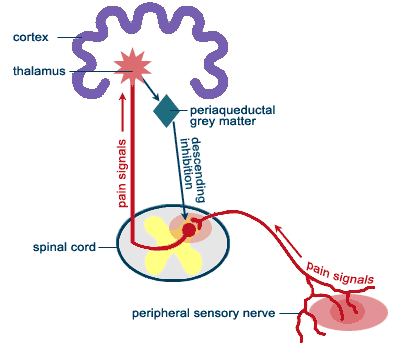|
by Nari Lee '17  Sex differences can create problems both in pain and its treatment. This topic adds yet another aspect to today’s complex sex/gender equality debate, but it’s highly relevant for anyone who experiences pain – namely, everyone. Research has revealed that males and females perceive pain differently, yet management of pain for men and women doesn't take that into account. In fact, treatment of pain is often generalized for both sexes (or worse, biased). Instead, doctors should tailor treatments to the differences in female and male bodies’ responses to pain and pain medicine. To do this, though, greater research is needed on sex-specific responses to pain treatments. Different Responses to PainCurrent research shows that compared to men, women experience more frequent and more severe levels of pain, along with pain of longer duration (1,2). When subjected to the cold pressor test (where the subject submerges a hand in ice water for as long as they can), males are usually more pain tolerant than females (3). These differences can have biological roots; for example, they can be due to the influences of gonadal steroids (4), the production and regulation of which differ by sex. Men and women also differ in responses to pain treatments. Another study supports the hypothesis that sex may affect responses to an interdisciplinary pain management treatment (5). It has also been shown that women experience greater levels of analgesia from opioids than men do (6). The ways that pain can currently be treated are many, ranging from the previously mentioned opioid analgesics to alternative therapies such as acupuncture. Studies of male and female responses to every method are difficult to conduct, though, because of variations introduced by the female reproductive hormones (7). Other barriers are the additional resources required to include female animals and women in studies and potential harm to the fetus in pregnant females (7). Research FocusDue to the previously mentioned factors, most scientists were still using only male animals in laboratory studies of pain, as recently as just over a decade ago (7). As a result, the availability of sex-comparative research on responses to pain medicine and treatments is limited. This shortage restricts the information available to medical practitioners when designing appropriate treatment plans for patients in pain. Though some scientists claim that experiments including female subjects would be too costly (7), the overall cost of ineffective treatments as a result of sex differences would be greater. If doctors were to base treatments off of data from male-centered research, then women would not be receiving adequate or appropriate management of their pain. Women have already been proven to use medical services more often (8) and increase healthcare costs accordingly; male-based research would only increase those costs as women continue to seek care for their unsatisfactorily treated pain. The Effect of Social Perceptions of Sex (i.e. Gender Bias)  Taking into account the gender bias that is present in physicians’ approaches to treatment exacerbates matters. A physician will often offer different treatments to men and women with the same condition (9). Research indicates that when suffering pain from AIDs, women are more likely than men to be under-treated, and more specifically, less likely to receive analgesics (10). This seems to contradict the previously mentioned data showing that women respond better to analgesics. If a physician knows that women respond better to analgesics, why are they prescribing less? What’s more telling, though, is that physicians are more likely to attribute pain to psychosomatic causes in women than in men (11). They also tend to take male patients more seriously than female patients (12). Unfortunately, commonly held social perceptions of sex seem to disfavor females in the clinical environment. ConclusionA delicate balance must be reached between sex-biased treatments and equal treatment of pain for patients. Standardized outlines for the prescription of analgesics or other methods of pain management would help promote equality, but they would also disregard the inherently different responses of the two sexes’ bodies to those treatments. As pain medicine progresses, practitioners should aim towards this careful balance, though difficult to achieve. With the publication of more research and reviews on the subject of sex differences, the trouble of doing so is no longer an acceptable excuse.
0 Comments
Leave a Reply. |

